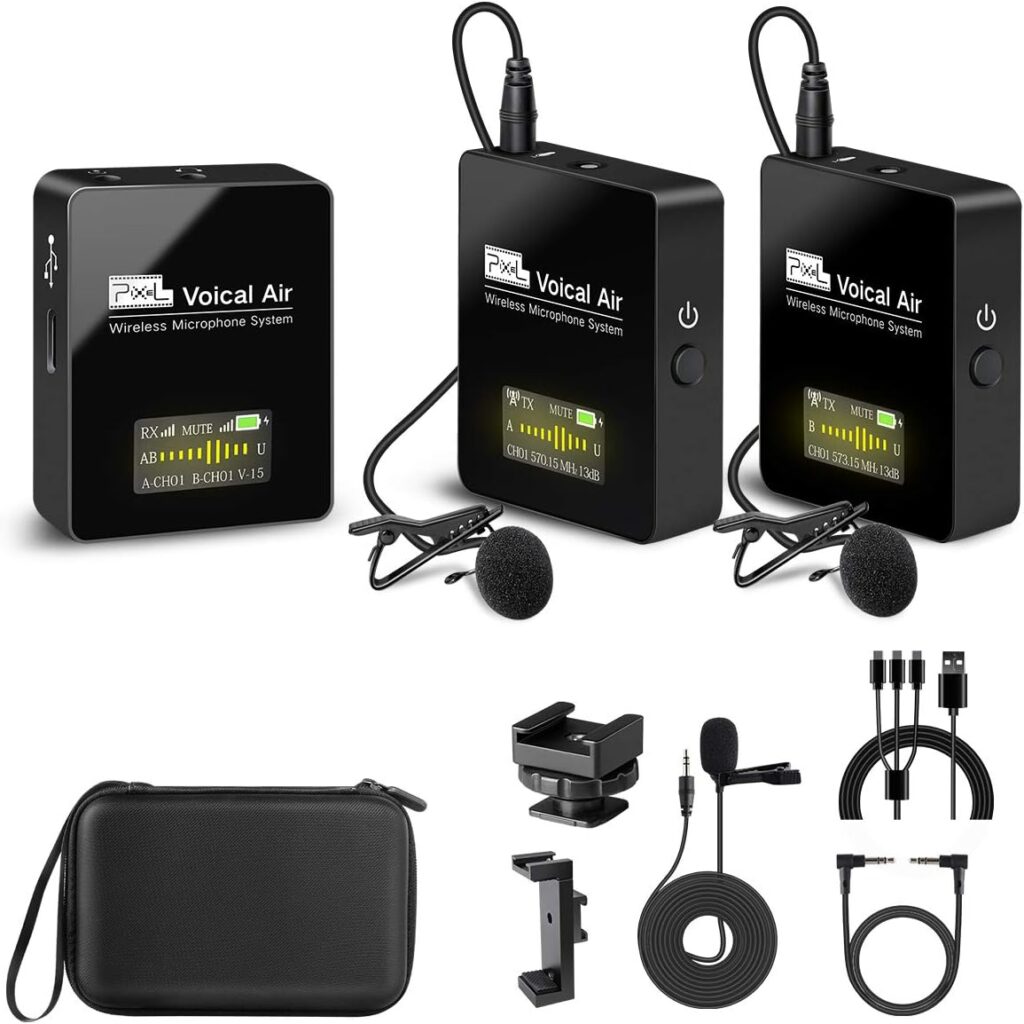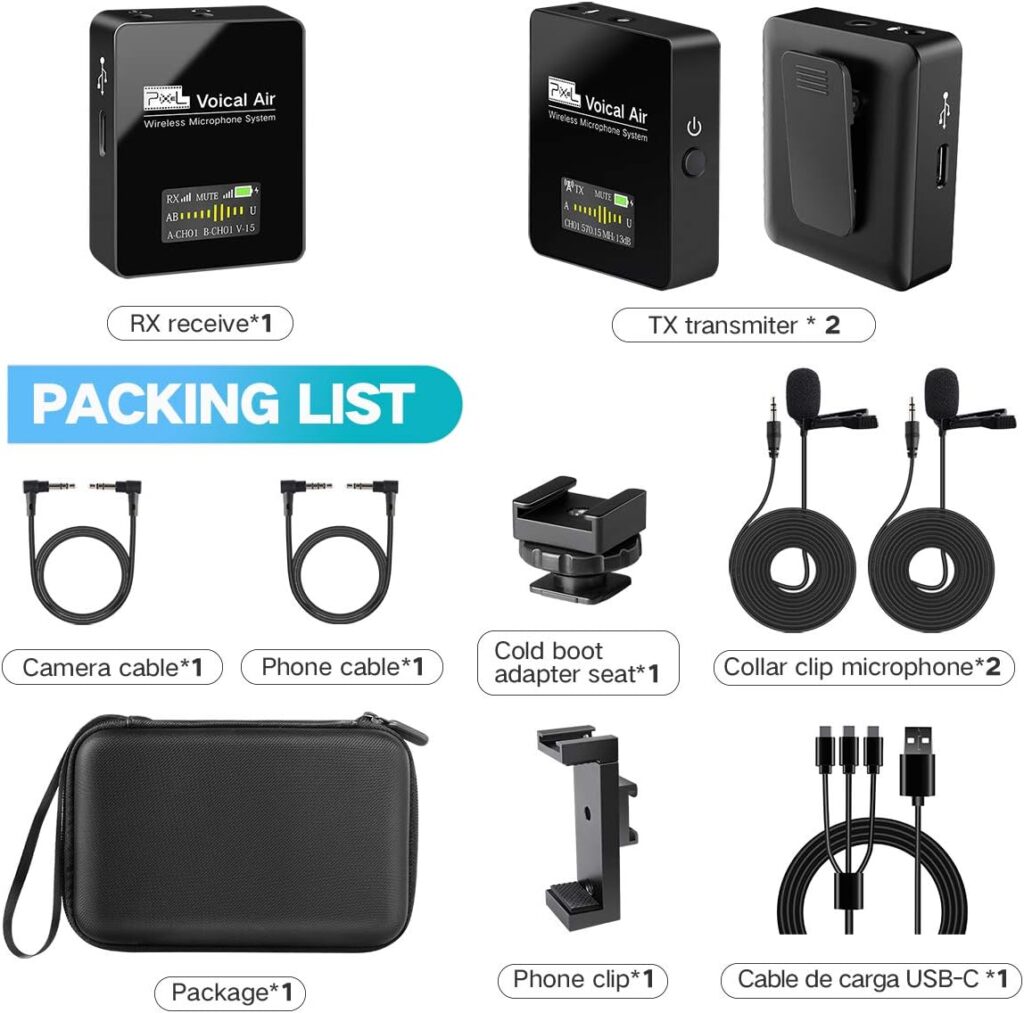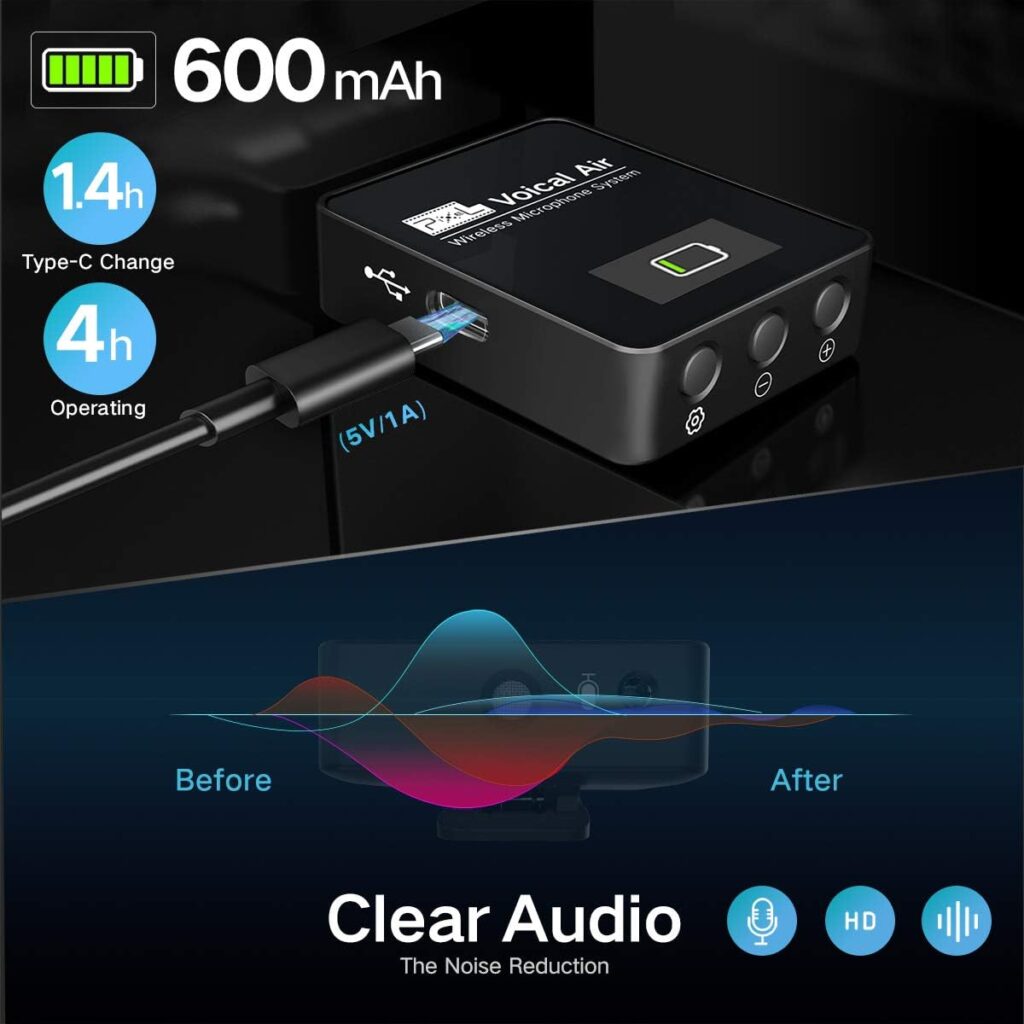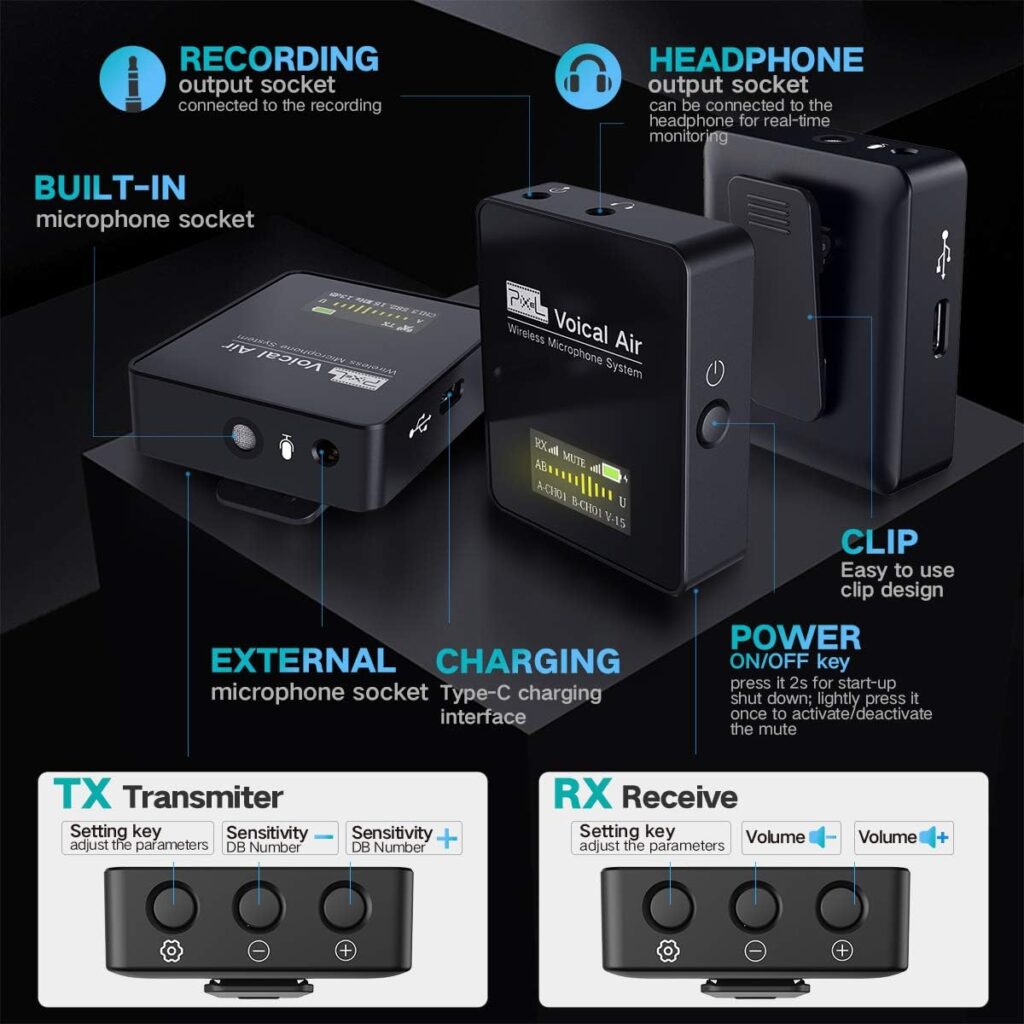Pixel UHF Review
The world of audio recording and content creation has evolved dramatically in recent years, with wireless microphone systems becoming a staple for creators ranging from vloggers to filmmakers. Among the many options available, the Pixel UHF Wireless Lavalier Microphone System stands out as an affordable yet versatile choice designed to meet the needs of lifestyle businesses, hobbyists, and semi-professionals. In this review, we’ll dive deep into the features, performance, pros, cons, and overall value of the Pixel UHF system, drawing from user experiences, technical specifications, and comparisons with similar products in its price range. Whether you’re recording a TikTok video, conducting an interview, or livestreaming, this review aims to help you determine if the Pixel UHF is the right tool for your audio needs.
Pixel UHF Wireless Lavalier Review
The Pixel UHF Wireless Lavalier Microphone System is marketed as an accessible solution for creators who want high-quality audio without breaking the bank. Manufactured by Pixel, a company known for producing a variety of lifestyle-oriented tech products—including lighting equipment, tripods, and microphones—the UHF system fits neatly into their portfolio of tools designed for content creators. This system promises wireless freedom, decent sound quality, and compatibility with a range of devices, making it an appealing option for those stepping into wireless audio for the first time or upgrading from basic built-in mics.
At its core, the Pixel UHF is a dual-microphone system, featuring two lavalier (clip-on) microphones that connect wirelessly to a single receiver. Operating in the Ultra High Frequency (UHF) band, it boasts a range of 100 to 200 meters (approximately 328 to 656 feet) in open areas, offering flexibility for a variety of recording scenarios. Priced competitively—often in the $100–$150 range depending on the retailer—it aims to deliver professional-grade features at a fraction of the cost of high-end systems like the Sennheiser G4 or Rode Wireless GO II.
Unboxing and First Impressions
Upon unboxing the Pixel UHF, the first thing that stands out is the inclusion of a variety of accessories. The package typically includes:
- Two lavalier microphones with omnidirectional pickup patterns
- A compact receiver unit
- A assortment of cables (3.5mm TRS, 3.5mm TRRS, and sometimes USB-C or Lightning adapters)
- Windscreens for outdoor use
- A carrying case or pouch
- A user manual
The build quality feels solid for the price point, with a mix of plastic and metal components that give it a lightweight yet durable feel. The microphones themselves are discreet, making them easy to clip onto clothing without drawing attention—a key feature for video content creators aiming for a polished look. The receiver is compact enough to attach to a camera, smartphone, or other recording device without adding significant bulk.
One immediate positive is the variety of included cables, which enhances compatibility out of the box. Whether you’re plugging into a DSLR camera, a smartphone, or a computer, Pixel seems to have considered the diverse needs of its audience. However, the lack of a premium finish (compared to more expensive competitors) is noticeable—there’s no mistaking this for a luxury product. That said, for its target market, the design prioritizes function over form.
Key Features and Specifications
To understand what the Pixel UHF offers, let’s break down its key features:
1. Wireless UHF Transmission
The system operates in the UHF frequency range (typically 470–960 MHz, depending on regional regulations), which is less prone to interference than the 2.4 GHz band used by many budget wireless systems. This provides a stable connection over long distances—up to 200 meters in ideal conditions—making it suitable for both indoor and outdoor use.
2. Dual Microphone Setup
The inclusion of two microphones is a standout feature at this price point. This allows for simultaneous recording of two subjects, ideal for interviews, podcasts, or dual-presenter setups. Each mic connects to the receiver via its own channel, reducing the risk of crosstalk.
3. Sound Quality and Voice Modes
The Pixel UHF offers five voice output modes: Original, Noise Reduction, Female-Voice Beautified, Male-Voice Beautified, and Children-Voice Beautified. These modes adjust the audio output in real time, tailoring it for different recording needs. The microphones feature a wide frequency response, delivering clear vocal reproduction with decent depth in the highs and lows.
4. Compatibility
With multiple cable options, the system works with DSLRs, mirrorless cameras, smartphones (via TRRS or adapters), and even laptops or audio interfaces. This versatility is a major selling point for creators using multiple devices.
5. Battery Life
The transmitter and receiver units are powered by built-in rechargeable batteries, offering around 6–8 hours of continuous use per charge. Charging is done via USB-C, a modern touch that’s convenient for on-the-go creators.
6. Ease of Use
The system is designed to be plug-and-play, with automatic pairing between the microphones and receiver. There’s no need for complex setup or frequency tuning, making it beginner-friendly.
Performance in Real-World Scenarios
Sound Quality
The audio quality of the Pixel UHF is impressive for its price range. The omnidirectional lavalier mics capture vocals with clarity, outperforming built-in camera or smartphone microphones by a wide margin. In controlled environments—like a quiet room—the sound is crisp, with minimal distortion even at higher volumes. The wide frequency response ensures that both high-pitched and low-pitched voices are well-represented, making it suitable for a variety of speakers.
However, the Noise Reduction mode is a mixed bag. While it does reduce some background noise, it’s not as effective as higher-end systems with advanced digital signal processing. In noisy environments (e.g., outdoors with wind or traffic), the omnidirectional pickup pattern can pick up unwanted sounds, requiring post-production cleanup or the use of a windscreen. Speaking of windscreens, the included ones are basic and may not fit perfectly, leading some users to repurpose windscreens from other mics for better results.
The “beautified” voice modes are a unique addition, aimed at creators who want polished audio without editing. The Male and Female modes add a subtle warmth and smoothness to the sound, while the Children mode boosts higher frequencies. These can be useful for quick-turnaround projects like live streams, but traditionalists may prefer the unprocessed Original mode for greater flexibility in post-production.
Wireless Range and Reliability
The advertised 100–200-meter range holds up well in open spaces, such as parks or large studios, with no noticeable dropouts or interference. Walls and obstacles reduce this range, as expected, but the UHF signal remains stable within 50–70 meters indoors—a respectable performance for the price. Compared to 2.4 GHz systems, which can suffer from interference in crowded Wi-Fi environments, the Pixel UHF’s UHF band offers a more reliable connection.
Compatibility and Setup
Setting up the Pixel UHF is straightforward. The receiver pairs with the transmitters automatically, and indicator lights confirm the connection. Plugging the receiver into a device is seamless, thanks to the included cables. Testing it with a DSLR (via the 3.5mm TRS cable) and a smartphone (via TRRS) showed no compatibility issues, though users with newer iPhones may need a Lightning adapter (not always included).
One minor gripe is the lack of real-time monitoring directly from the receiver. Higher-end systems often include a headphone jack on the receiver for live audio checks, but here, you’ll need to rely on your recording device’s monitoring capabilities.
Battery Life
The 6–8-hour battery life is adequate for most shoots, especially with the ability to recharge via USB-C. For longer sessions, a portable power bank can keep it running. However, there’s no quick-swap battery option, so planning ahead is essential.
Pros and Cons
Pros
- Affordable Price: At $100–$150, it’s a budget-friendly entry into wireless audio.
- Dual Microphones: Recording two subjects simultaneously is a rare feature at this price.
- Versatile Compatibility: Works with cameras, phones, and more, thanks to multiple cables.
- Decent Sound Quality: Clear vocals with a wide frequency range outshine built-in mics.
- Long Wireless Range: Up to 200 meters in open areas is impressive for the cost.
Cons
- Noise Reduction Limitations: Struggles in noisy environments without additional accessories.
- Build Quality: Plastic-heavy construction feels less premium than competitors.
- No Real-Time Monitoring: Lacks a headphone jack on the receiver.
- Basic Windscreens: Included windscreens are subpar for outdoor use.
- Battery Dependency: No swappable batteries mean downtime during recharges.
Comparison to Competitors
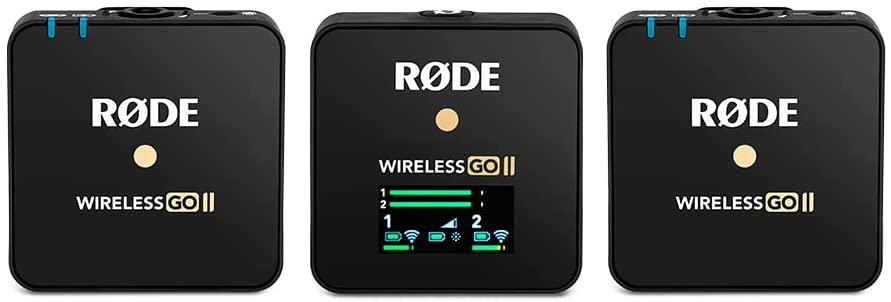
To put the Pixel UHF in context, let’s compare it to two popular alternatives in a similar price range:
1. Rode Wireless GO II ($299)
The Rode Wireless GO II is a premium option with superior build quality, digital 2.4 GHz transmission, and onboard recording. It offers better noise handling and a more robust feature set, but it’s twice the price of the Pixel UHF. For solo creators, the single-mic version of the Rode system ($199) is still pricier than the Pixel’s dual-mic setup.
2. Comica BoomX-D ($119–$169)
The Comica BoomX-D is a direct competitor, also using 2.4 GHz transmission. It offers similar dual-mic functionality and includes real-time monitoring, but its range (50 meters) is shorter than the Pixel UHF’s. Sound quality is comparable, though the Pixel edges out slightly in vocal depth.
The Pixel UHF sits in a sweet spot: it’s cheaper than the Rode, offers a longer range than the Comica, and provides dual mics at a lower cost than both. However, it sacrifices some refinement in noise reduction and build quality.
Who Is the Pixel UHF For?
The Pixel UHF is best suited for:
- Lifestyle Creators: YouTubers, TikTokers, and streamers who need affordable, wireless audio for at-home or small-scale shoots.
- Beginners: Those new to wireless systems will appreciate its simplicity and plug-and-play design.
- Budget-Conscious Teams: The dual-mic setup is perfect for interviews or two-person podcasts on a tight budget.
It’s less ideal for:
- Professional Filmmakers: Those needing top-tier noise cancellation or rugged durability may look elsewhere.
- Outdoor Enthusiasts: Wind and environmental noise can be challenging without additional gear.
- Long-Form Shooters: The lack of swappable batteries limits extended use.
The Bottom Line
The Pixel UHF Wireless Lavalier Microphone System is a compelling choice for budget-conscious content creators seeking a reliable wireless audio solution. Its strengths—dual mics, long range, and ease of use—make it a standout in its category, while its weaknesses (noise reduction and build quality) are forgivable given the price. For lifestyle businesses, hobbyists, or anyone looking to upgrade from wired or built-in mics, the Pixel UHF offers a practical, cost-effective tool that gets the job done.
If you’re willing to invest in a windscreen upgrade and don’t mind occasional post-production tweaks, this system could be a game-changer for your audio setup. For those with more demanding needs, it’s a great stepping stone before committing to a higher-end system. All in all, the Pixel UHF earns a solid recommendation as a versatile, wallet-friendly option in the crowded world of wireless microphones.

